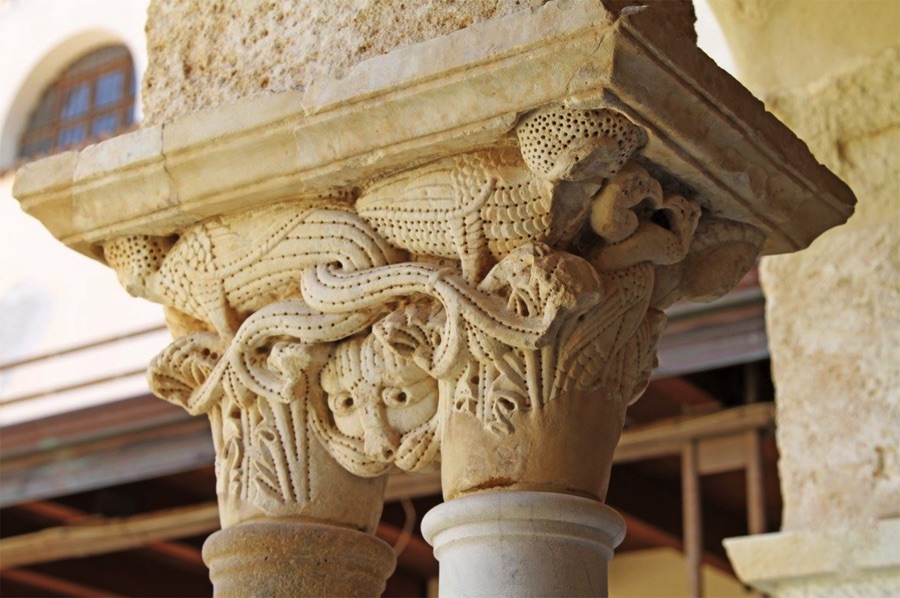According to recent studies, the cloister’s twin capitals on double columns, an example of Romanesque sculpture with international appeal, are attributable, for the most part, to a Provençal sculptor known as the “master of cherubs”. The magister who worked in the Cefalù Cathedral around 1160, and who later worked in the Monreale factory, acts as evidence of the cultural climate of the time. In fact, the master stonemasons and sculptors travelled around the large construction sites, introuducing stylistic innovations.
An analysis of the architectural design of the Cefalù Cloister revealed similarities in a certain number of capitals, which can therefore be attributed to the same artist. For example, there are decorations with acanthus leaves placed in the initial part of the pair of capitals that proceed both upwards and downwards, following a common ornamental path. In particular, the leaves at the top widen in an arch, forming a crown that supports those at the bottom. The latter open outwards to form a right angle on which the figurative decoration with anthropomorphic and zoomorphic representations rests.